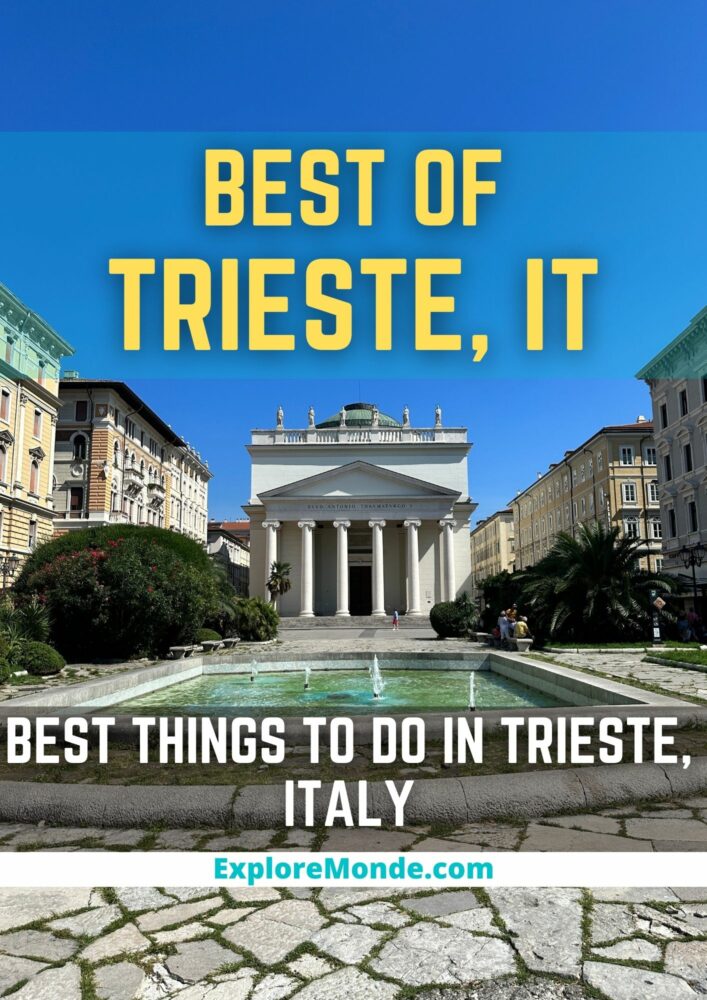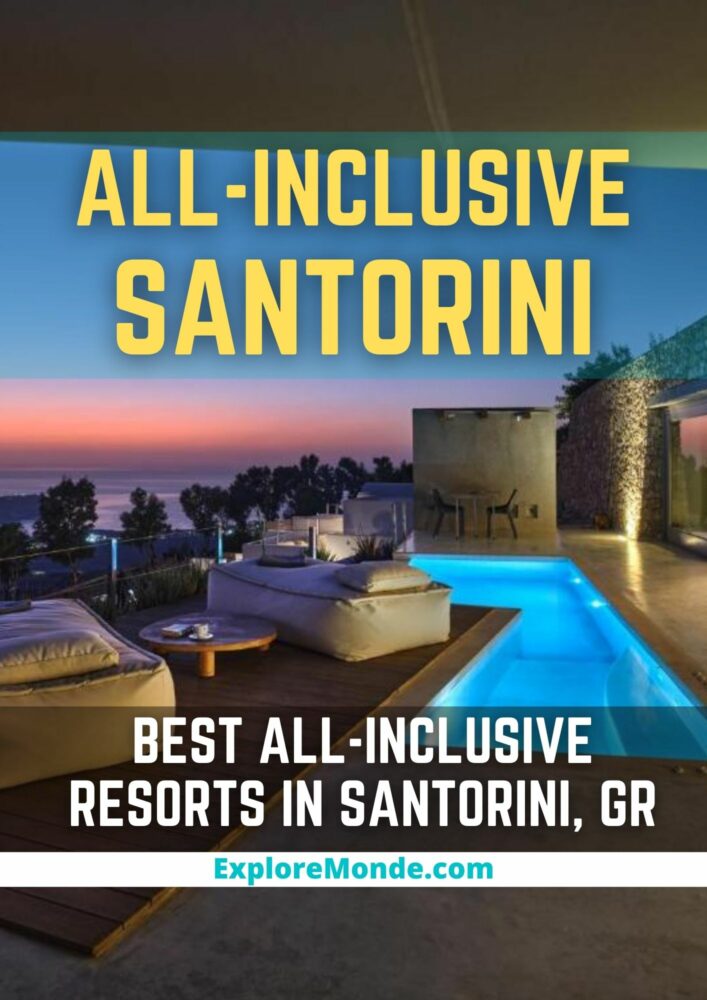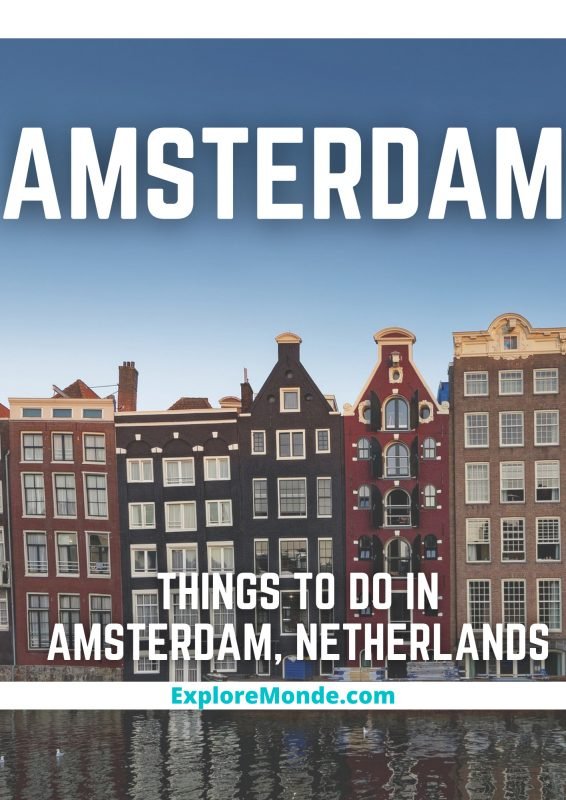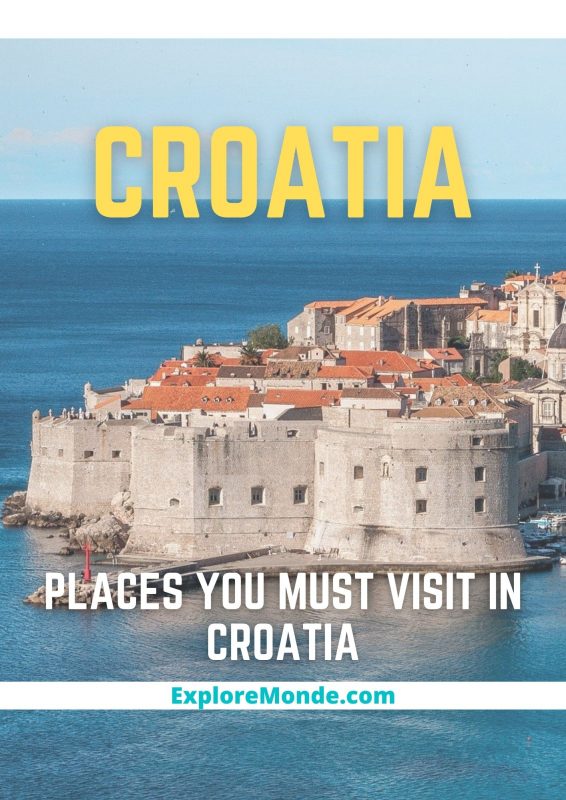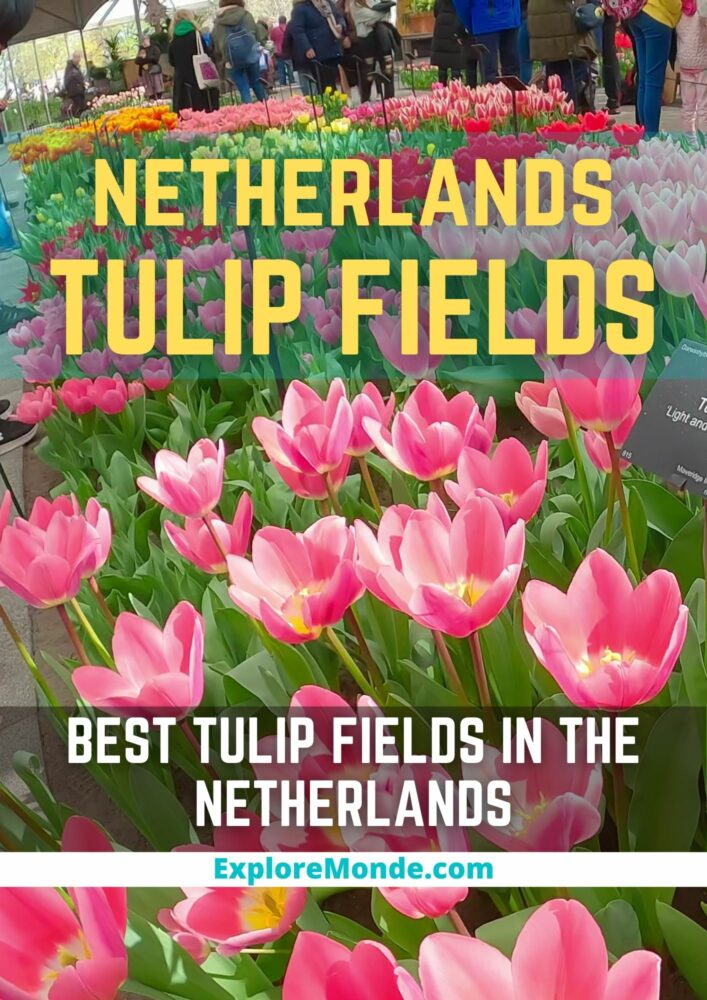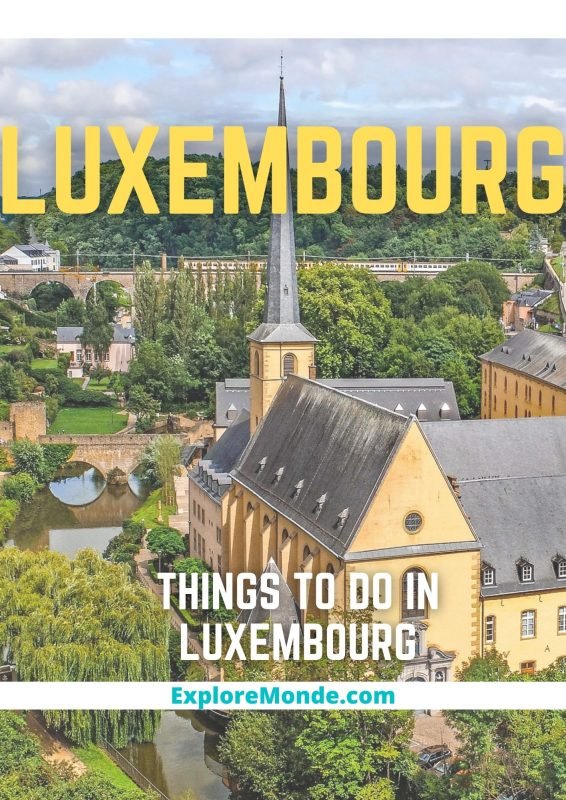This article has been reviewed by Laura and Sumeet, travel enthusiasts who have travelled to 40+ countries. (Follow @Ciao.Namaste on Youtube). Should you have any inquiries, please do not hesitate to contact at contact@exploremonde.com
The Faroe Islands have always been a place of beauty and wonder. It is one of the most incredible places on earth. From the rolling hills to the mountains covered in snow, Faroe is a place that is sure to brighten your mood. If you are looking for an excellent holiday destination, this may be just what you need. The Faroese people are friendly and welcoming, with very few tourists visiting their country. They are proud of their culture and traditions, which they take great pride in preserving.
There are so many things to do in the Faroe Islands, from whale watching to hiking, from swimming in the ocean to exploring its many caves and tunnels. But with so many things to see and do, it can be hard to know where to start.
Here are the 17 best things to do in the Faroe Islands that will make your holiday complete.
- 1. Múlafossur Waterfall in Faroe Islands
- 2. Geituskorardrangur, Vagar
- 3. Viðareiði Village, Viðoy
- 4. Saksun
- 5. Ferries to Kalsoy and Other Islands
- 6. Visit Kallur Lighthouse, Kalsoy
- 7. Mykines Island
- 8. Hvíthamar Mountain
- 9. Gjógv Village, Eysturoy
- 10. Tjørnuvík, Streymoy
- 11. Visit Ásmundarstakkur
- 12. Vestmanna Sea Cliffs, Faroe Islands
- 13. Lake Sorvagsvatn, Faroe Islands
- 14. Foroya Fornminnissavn Museum, Torshavn
- 15. Explore Tinganes, the Main Capital of Torshavn
- 16. Catch a Live Performance in Norðurlandahúsið, Torshavn
- 17. Trælanípan in Faroe Islands
Best Things To Do in Faroe Islands 1-10
1. Múlafossur Waterfall in the Faroe Islands
Múlafossur waterfall is located in the village of Múli on Eysturoy, Faroe Islands. The waterfall has a height of about 100 meters and can be seen from many places around it. It’s believed that this particular waterfall was formed by an ice age that occurred 10,000 years ago when glaciers melted over its rock face to create the cliff-like shape you see today. There are also other waterfalls nearby such as Kaldbakurfossur (also known as Hamragarðskvísl) with a height of 60 meters and Skálafoss with a 40-meter high drop into the ocean below.
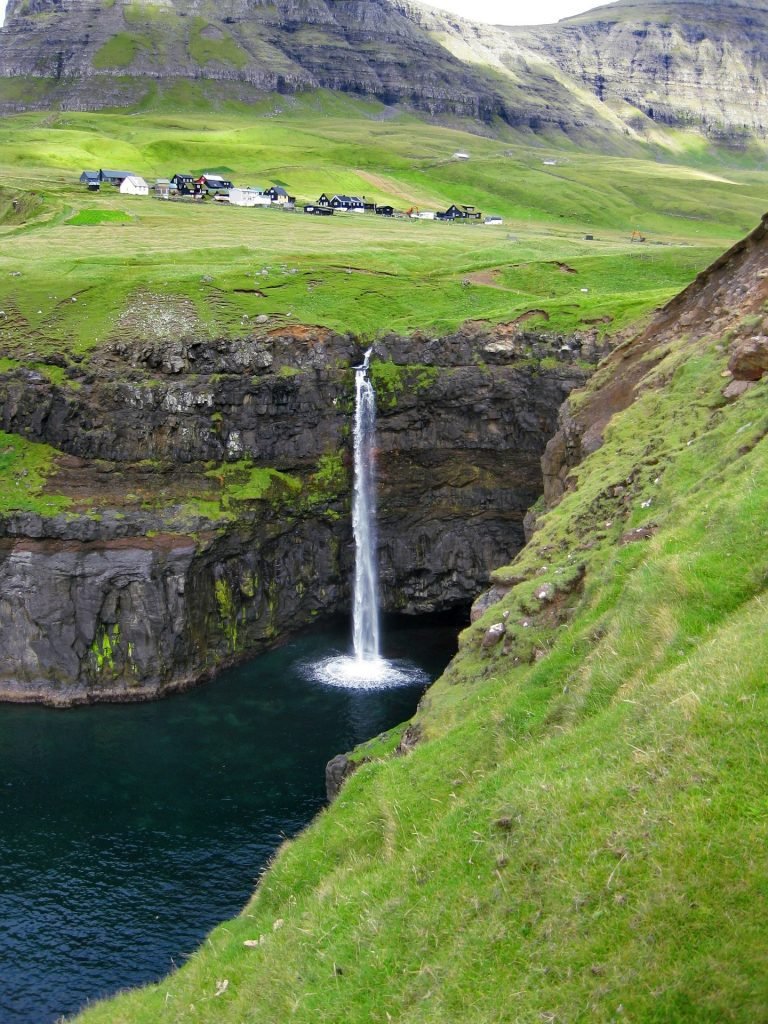
The area offers some great hiking trails for those who want to explore more closely or even spend time camping out overnight at one of their designated sites where there is running water available for cooking etc., including toilet facilities too!
If you’re interested in visiting Múlafossur Waterfall then head southwest from Tórshavn towards Gøta along Route 13 until you reach Fámjin; turn left here onto Route 14 before continuing onwards through Øravík til finally reaching your destination after approximately 8km away.
2. Geituskorardrangur, Vagar
Geitiskorárdrangur is a stone circle situated on the island of Vagar. It’s believed to be one of the oldest human constructions in Denmark, dating back to 3000 BC or even earlier. Geitiskorárdrangur has been used for various purposes throughout history including as an astronomical observatory and as a place where people would come together during celebrations with food offerings. The most famous example is when it was used by Vikings who were celebrating their victory over King Harald III Bluetooth at Limfjorden in AD 1025
Geituskorardrangur is located just off Route 1 which connects Tórshavn and Klaksvík so you can visit this historic site while traveling around the Faroe Islands!
3. Viðareiði Village, Viðoy
Viðareiði is a village on the island of Viðoy in the Faroe Islands. It has about 200 inhabitants and it is located near Árnafjørður, which is one of two harbors for sailing boats on this island. The other harbor is Skopun at Sandvík.
The name means “the white beach”. There are several small coves with sandy beaches around Viðareidi as well as an old herring factory which now houses a museum called Fiskimússan (Fish Museum). Alongside fishing, there used to be some farming but nowadays only sheep roam these hillsides.
Bestseller Drones
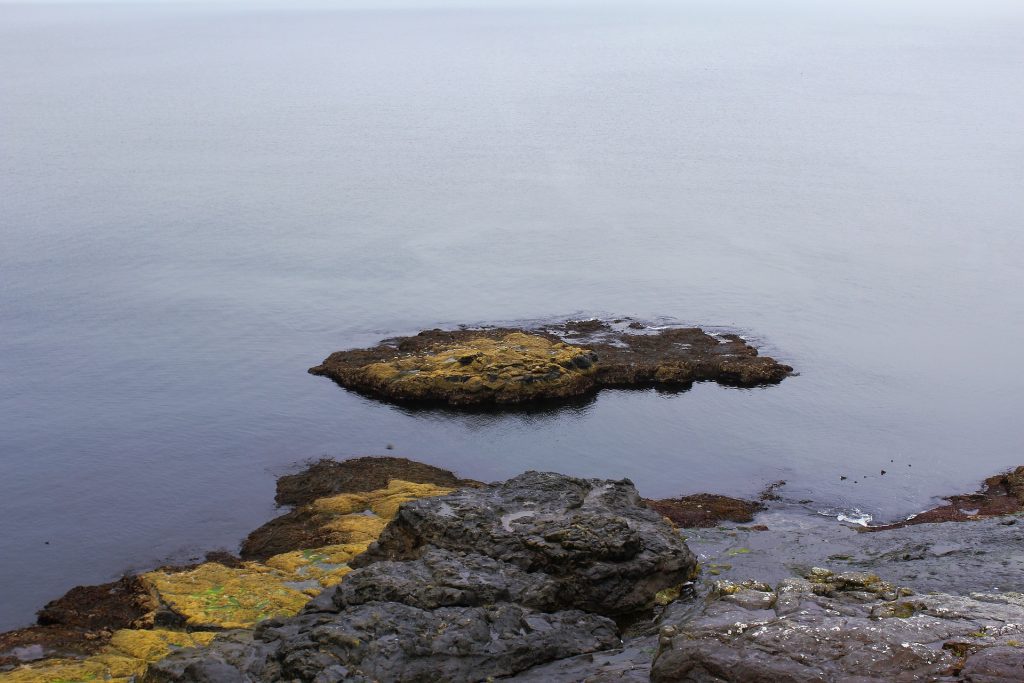
The village of Viðareidi is located in the valley between the mountains of Vágar and Hvannadalshnúkur. The nearest village is Mosfellshreppur which lies about 15 minutes walk away.
In the winter months, there are only a few houses around Viðareidi but in the summer months, there are many people that live around here. The village has a few cafes and restaurants which serve traditional Faroese food such as smoked fish, lobster, lamb, and whale meat.
In 2010, UNESCO added Viðareidi to its list of World Heritage Sites due to it being an important cultural place for the Faroese people.
During the summer months when school ends and children go home from their studies in Tórshavn, many families go on day trips to the Faroe Islands. These families stay at Fiskimússan which is a museum of fishing in Viðareidi. There are many traditional Faroese houses around Viðareidi and they have been preserved over the years.
Viðareidi is located on the Ring Road that connects Tórshavn with Vágar. The Ring Road goes around all of the islands in the Faroe Islands but there are no roads connecting Viðareidi to any other part of the country.
Bestseller GoPro Selfie Sticks
4. Saksun
Since the Faroe Islands are a self-governing nation under Denmark, they have their own currency and monetary system. The Danish krone is also accepted in many places on the islands. It’s best to visit an ATM before traveling if you’re not carrying cash with you or exchanging money at your destination airport. You’ll find ATMs in most towns and villages around Saksun as well as banks that offer foreign exchange services for international visitors who need them.
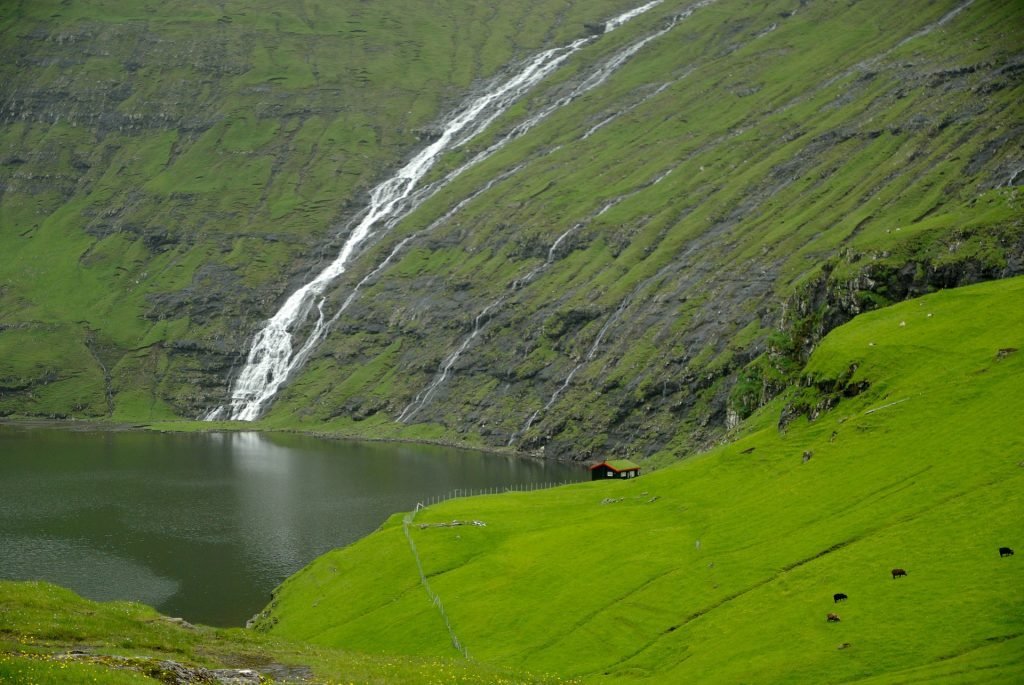
Saksun is located about two hours by car from Torshavn, so hiring transportation will be necessary unless you want to take public transport which can get expensive over such a long distance! There are buses available but they only run once per day during summertime so plan accordingly. Another option is hitching with someone else who’s driving in the direction of Saksun; this may not always be an easy task but it would save money on gas and time waiting at stops along the way.
If you are looking for a beautiful place with quietness and peace, Saksun is a perfect choice. It’s one of the most isolated settlements in the Faroe Islands.
5. Ferries to Kalsoy and Other Islands
Ferries are a popular way to travel between islands in the Faroe Islands. Ferries depart from Tórshavn on several routes, including one that travels to Kalsoy Island, which is the largest of the inhabited islands and has a population of about 1,600 people. The ferry ride takes approximately 40 minutes in each direction and costs around 300 DKK for adults or 200 DKK for children under 12 years old (as of 2017). There are also ferries connecting Skopun with Stokkseyri every hour during daytime hours.
6. Visit Kallur Lighthouse, Kalsoy
The Kallur Lighthouse is located in the Faroe Islands, on a small island called Kalsoy. It was built in 1853 and has an octagonal tower that stands 23 meters (75 ft) tall. The lighthouse’s light can be seen from up to 35 km away, making it one of the most powerful lighthouses worldwide.
Bestseller Copper Water Bottles
Built by British engineers who were contracted for their expertise with lighthouses during this period, its construction took two years due to difficult weather conditions and terrain challenges faced when building around cliffsides or across ravines near sea level where there are few flat places available for work sites.
The lighthouse was constructed to serve as an aid to maritime traffic, which at the time was the main form of transportation. It is still a functional lighthouse, with a light that flashes every 15 seconds.
Kallur Lighthouse is featured in the James Bond movie “No Time to Die”. The scenery around it was captured beautifully by the crewmembers of the film, who were impressed by how much there was to explore in Kallur.
7. Mykines Island
Mykines island is located in the middle part of the country with views across to Eysturoy Island on one side and Streymoy Island on the other side. Mykines were originally inhabited by Norwegian Vikings but later became home for fishermen from Scotland who settled here during the 17th century when Scottish fishing fleets began visiting this area regularly as it had rich stocks of codfish at that time. The island is currently uninhabited but is a popular holiday spot for visitors from Denmark, Norway, and Iceland.
The island has a population of around 30 people who live in the two villages of Vágur and Tvøroyri. It is a place of outstanding natural beauty, with beautiful beaches and cliffs that go down to sea level. The most important feature of the island is its three lighthouses that stand tall and bright against the backdrop of the stunning Faroe Islands. The oldest lighthouse was built in 1827, while the other two were built in 1867 and 1890 respectively. These lighthouses date back to when there was an iron ore mine on Mykines that operated until 1929.
Bestseller Cupholder Bottles
The three lighthouses are located close to each other at different points along the coastline, making them easy to see from far away, even if you’re not on Mykines itself. The reason they are so close together is that they were built as a result of the mine closing down. The mine was originally located at Vágur and Mykines, but it was deemed unprofitable, so the company moved it to Tvøroyri. This caused the need for new lighthouses when the mine closed and the mine owners just had them built in close proximity.
The lighthouses are now maintained by national government agencies, which means that they are currently open to visitors so long as they follow some rules. The first is to not climb up onto the wooded ramparts of the lighthouses, which is a popular activity among tourists who visit Mykines Island. They can also not light fires or stay overnight on top of these towers as this could damage them and cause them to collapse in on themselves. Visitors can be fined for both activities if caught doing either of these things.
8. Hvíthamar Mountain
Hvíthamar is a mountain in the Faroe Islands. It has an elevation of 827 meters (2,706 ft) and it is in the northernmost part of Eysturoy island. The highest peak on Hvíthamar reaches up to 1,006 meters (3,297 ft). Hvíthamar is one of two mountains that form what could be called “the gate” between Norðoyggjar and Vesturlandet; this range also includes Slættaratindur across from Vágseiði at Skúvoy’s southern tip.
Hiking trails are found all over the Faroe Islands but not many people choose to hike up here because there aren’t any shelters or anything like that for hikers who want to stop during their trip – so most people just go around it instead! There are some old stones near its summit though with ancient writings carved into them that date back centuries ago when Vikings lived on these islands.
9. Gjógv Village, Eysturoy
Gjógv is a small village on the island of Eysturoy in the Faroe Islands. It has about 100 inhabitants and it’s located at an altitude of around 50 meters above sea level. The name Gjógv means “bay” or “cove”, which explains why this area was named that way, as there are many bays along its coastline. In addition to being a great place for fishing, hiking, and birdwatching, Gjógv also offers some other attractions such as Víkurbrautin (a walking path), Klaksvik Church from 1867 with two bells from 1783) and Dalsgarður Lighthouse built in 1900).
The hiking trail up Gjógv is a relatively easy one with an elevation gain of only 90 meters. It takes about 3 hours to complete, but you must be careful to avoid falling rocks because there are some sections of this trail that are very steep and slippery. The trail starts at the northern side of the village and then continues along the coast all the way up to a peak called Gjógvstovuorður which is named after the cove at its tip.
10. Tjørnuvík, Streymoy
Tjørnuvík is a tiny fishing village on the island of Streymoy in the Faroe Islands. It has about 60 residents and it’s located at the end of Skálarfjørður, which means that you can’t get there by car or bus. You have to take a boat from either Klaksvík (about 10 minutes away) or Tórshavn (1 hour). There is also an airport in Vagar; however, it only provides flights during summertime when tourists come for vacationing activities such as hiking and bird watching.
The area around Tjørnuvík offers many opportunities for outdoor recreation such as walking along one of its beautiful coastal paths with breathtaking views over fields and sea stacks, going kayaking through narrow channels between islands where seals are often spotted basking on rocks next to little beaches with seabirds nesting nearby-or just sitting down somewhere enjoying all this beauty!
Best Things To Do in Faroe Islands 11 and beyond
11. Visit Ásmundarstakkur
The Ásmundarstakkur is a very popular tourist attraction in the Faroe Islands. It’s known as one of the most impressive natural wonders on earth and it was formed by an eruption from the Eldborg volcano, which happened around 730 years ago. The lava flow that created this mountain has been named after Ásmundur Pálsson who died there during his fight against Ljósvetninga men at Tinganes, back when he served as bishop for all of Scandinavia.
The formation stands out because its column-shaped layers are so prominent and regular across its surface – making it look like a giant staircase going up to heaven! Visitors can explore these different levels with their hiking boots or even take a cable car ride up to see everything close up!
The Ásmundarstakkur is located near the village of Hvítanes, which is about halfway between Tórshavn and Vágar. The closest airport is Tórshavn, but if you want to fly there it might be best to go to one of the airports in Copenhagen or London. If you want to explore the area on your own, it’s recommended that you take a car while staying on the islands. If you’re not a great driver, make sure to hire a tour guide who can show you around!
A visit to the Ásmundarstakkur will definitely be an experience that you’ll never forget!
12. Vestmanna Sea Cliffs, Faroe Islands
The Vestmanna Sea Cliffs is a beautiful site in the Faroe Islands. The cliffs are located on the southern coast of Streymoy, which is home to one of the most populated islands in this archipelago nation. It’s also known as “the rolling sea” because it has waves that rise and fall with incredible force against its rocks due to storms from all directions hitting these natural barriers at once. This area can be reached by foot or via boat from Hvalvik harbor, where you’ll find parking for your car if you come by land transport and docks for boats arriving by waterway. From here visitors will have an excellent view over Vágur Bay towards Suðuroy’s mountainside across Skúvoy Sound – perfect photo opportunities!
There are many interesting things to explore within walking distance such as bird colonies, rock formations like Fjallfoss Waterfall (falling down into deep blue waters), and ancient ruins dating back hundreds of years ago when people were living off fishing alone without any other form of income or trade activity they could rely upon during times when there was no fish left after winter had set in, and more!
13. Lake Sorvagsvatn, Faroe Islands
Lake Sorvagsvatn is a lake located in the Faroe Islands. It has an area of 0,03 km² and it’s one of the biggest lakes on this island nation. The water from the lake goes to Vagar Bay through the Hvalba River which flows into Skúvoy Harbour at its southern end. There are many species living here including brown trout, Arctic char, and Atlantic salmon among others.
Bestseller Drones
The land surrounding these waters is mainly agricultural with sheep farming being very popular around here as well as some fishing for example by using netting or traps that can be found near shorelines where fish like cod live. There are few settlements close to this body of water but there are plenty more north-east on Ási or south-west on Suðuroy Island.
Bosdalafossur is an amazing waterfall in Lake Sorvagsvatn that you should definitely take a photo of.
14. Foroya Fornminnissavn Museum, Torshavn
The museum is housed in a building that dates back to 1881. It was built by the Danish architect Martin Nyrop, who also designed other buildings on Torshavn’s main street. The architecture of this building reflects an eclectic mix of styles from different periods, with Gothic and Baroque elements as well as Neoclassical ones such as Doric columns and triangular pediments typical for Denmark at that time appearing alongside more exotic influences like Moorish arches.
15. Explore Tinganes, the Main Capital of Torshavn
The main capital of Torshavn is called Tinganes. It was built by the Danish in 1814, and it has a beautiful church that dominates the city skyline. The town square consists of several buildings such as government offices, banks, and shops that are mostly made out of wood or stone with colorful facades on them.
The building in front is an old-fashioned theater where you can watch movies all day long for free! There also happens to be a restaurant inside this very same building so if you’re hungry after watching your movie there’s always something to eat nearby.
16. Catch a Live Performance in Norðurlandahúsið, Torshavn
Norðurlandahúsið is a concert hall in Torshavn, the capital of the Faroe Islands. It was designed by Danish architect Jørn Utzon who also created the Sydney Opera House and IBM Building. The building’s design features an undulating roof that covers both floors to create a sense of intimacy with natural light entering through skylights on all sides, which are covered with perforated metal plates painted green and blue giving it its distinctive look from afar.
17. Trælanípan in Faroe Islands
Trælanípan is a favorite among travelers to the Faroe Islands. It’s only a short hike from Vagar Airport and offers some of the most spectacular views in all of Europe. Trælanípan (Slave Cliff in English) has an amazing view overlooking the North Atlantic Ocean and Látrabjarg Bird Cliffs- which are said to be home to more than 1 million birds!
Background on Origin of ‘Trælanípan’
In Faroese folklore, a trælanípan is a spirit that can take the form of an animal. The word “træl” means slave or servant and “níp(en)” translates to nose in English. They are said to be invisible creatures that serve witches by doing housework for them while they sleep during the daytime. In some stories, it’s also stated that if you see one out in daylight hours then their witch will die soon.
In other tales from Icelandic folklore, there are beings called nisser (singular: nisse) which have been translated as trolls or gnomes but these entities do not resemble fairies at all and behave more like humans with magical powers than anything else; they might even be benevolent towards human children.
Norse mythology tells us about dwarves called dvergar which were skilled craftsmen living underground near hot springs where metal could be found – this would mean that many scholars believe Norse myths refer to real people rather than mythical ones since metals were mined before Christianity arrived in Iceland around 1000 AD (and indeed most early settlers came overland). It has been theorized that elves may represent memories of Bronze-age inhabitants known as the “Druids”, who were skilled metalworkers and smiths. In Norse mythology, elves are a class of beings that live in mountains and forests and are often associated with the god of mankind, Odin.
The word ‘elf’ was first recorded in Old English as alu, which is thought to mean ‘spirit’. The word elf is also thought to derive from elfin (from Old English elfer). It is possible that elves are a remnant of the ancient gods of Europe or their descendants. This theory has been popularized in recent years by authors like J.R.R Tolkien, who wrote the famous book series called The Lord Of The Rings.
Another theory suggests that elves are as mythical as fairies and trolls but this cannot be proven or disproven yet since they have never been officially recognized by any government; they are said to resemble Native Americans with their long pointed ears and long white hair but they may actually be descended from the ancient peoples of Europe. The same might be said for the fairies, who have been documented as a race of beings that resemble fair-skinned people.
A third theory suggests that elves are a different race altogether, like the Native Americans, and that they are related to or descended from the ancient tribes of Europe. They may also have been part of a group known as the Tuatha Dé Danann, who were known to inhabit Ireland and other areas in Europe.
The word ‘fairy’ is thought to derive from an Old English word meaning ‘spirit’, which is thought to originate from an old Germanic word meaning ‘dweller in woods’. Fairies were said to live in forests and could shapeshift into animal forms such as deer and squirrels. They are said to be beautiful but they were considered evil because they would steal babies away at night and take them back home with them where they had their own children.
General Tips For Enjoying The Faroe Islands
Hike One of the Great Mountains
Many people know of the Faroe Islands, but few have been. One of the best things to do in the Faroe Islands is hike one of the great mountains. When you climb up high enough on the mountain, you will see a beautiful sight that is unmatched by anything else in the world. The hills and valleys are just a part of this wonderful experience.
Explore The Untamed Nature
If you are looking for something to do in the Faroe Islands, then exploring the untamed nature is an excellent place to start. The natural beauty of this island is truly a sight to behold. With green rolling hills and snow-covered peaks, there is enough natural scenery on this island that would take a lifetime to explore. You can go hiking or on a mountain bike ride and see the many different sizes of valleys.
Witness The Beauty Of The Northern Lights
The Faroe Islands is a place of natural beauty. One of the most stunning sights, yet, is the Northern Lights. These beautiful lights are formed from particles colliding with the Earth’s atmosphere and emit a variety of colors including red, green, white, and blue. The best time to see these lights is in September and October when the weather is not as cold.
Enjoy a Traditional Meal
One of the most popular things to do in the Faroe Islands enjoys a traditional meal. There are many different food options, but one that stands out is smoked sheep’s head.
Discover The History
The Faroe Islands have a rich and interesting history. The country was first inhabited by the Vikings, who still inhabit the country to this day. There are many Viking artifacts that can be found throughout Faroe, which is what makes it so interesting for tourists. You should visit the Viking museum in Torshavn to see just how much of an impact they had on the Faroe Islands.
Be A Part of the Culture
The Faroe Islands is an island country in the North Atlantic that has its own rich culture. With a long history of Vikings, there are many things to learn about this culture by visiting the Faroe Islands. For example, you can visit ancient Norse ruins to see for yourself where the Vikings used to live. There are also stories of how these Vikings lived and cultured their lives while they were here which you can learn while on your trip. So while visiting the Faroe Islands, be sure to take the time to be a part of this culture and learn about their traditions and customs.
Catch a Surf Wave
If you’re looking to work on your tan, there is no better place than the beach! You can lay out in the sun and swim in the ocean. If you’re more of a land-lover, there are also plenty of hiking trails and mountains to explore. One of the most popular things to do in the Faroe Islands is catching a surf wave. The country has some really excellent surfing waves for beginners and experts alike. With so many different beaches and surf spots, you’ll never be bored searching for your next perfect break.
Take In Breathtaking Views.
The Faroe Islands are a beautiful place. The rolling hills and snow-covered mountains make for a picturesque setting. So, don’t forget to take a breath and enjoy the view. Some of the best places to witness this beauty include Mount Haldórsfjall, Mount Slættaratindur, and Tinganes.
Out of the list of the Best Things To Do in the Faroe Islands, you can pick and choose which ones you want to cover depending on your preferences and how much time you have available on hand. We’d recommend doing all of them!
The Faroe Islands have plenty to offer to nature-loving travelers. Add these places to your wishlist when you visit the Faroe Islands.
Read also:
- Paris: 41 Best Things To Do in Paris – The City of Lights
- Nice: 20 Best Things to do in Nice, France
- Normandy: Ignore These 22 Best Things to do in Normandy, France at Your Own Peril
- Hamburg: Ultimate Guide to 30 Best Things to do in Hamburg, Germany
- Milan: 31 Best Things to do in Milan, Italy
- Rome: 25 Best Things to Do in Rome – Beautiful & Historic City of Italy
- Naples: 25 Best Things To Do In Naples, Italy
- Florence: Plan a Trip For 2 Days in Florence, Italy
- Barcelona: 27 Best Things To Do in Barcelona – Gaudi’s Town
- Seville: 18 Best Things to do in Seville, Spain
- Lucerne: 15 Best Things to do in Lucerne, Switzerland
- London: 21 Best Things to do in London That Will Knock Your Socks Off
- Brussels: 39 Best Things to do in Brussels – Beautiful Belgian Capital
- Luxembourg: 26 Best Things to do in Luxembourg – Europe’s Beautiful Small Country
- Monaco: 24 Best Things To Do in Monaco – The Stylish City-State in French Riviera
- Amsterdam: 24 Best Things to do in Amsterdam – The Beautiful Dutch City
- Bruges: 22 Best Things to Do in Bruges – The Stunning Belgian Fairytale Town
- Croatia: 28 Best Things To Do in Croatia For Ultimate Experience
- Faroe Islands: 17 Best Things To Do In Faroe Islands Archipelago
- Prague: 21 Best Things to do in Prague -The Pretty Czech City.
- 29 Best International Spring Break Destinations
- 48 Best Spring Break Destinations in USA
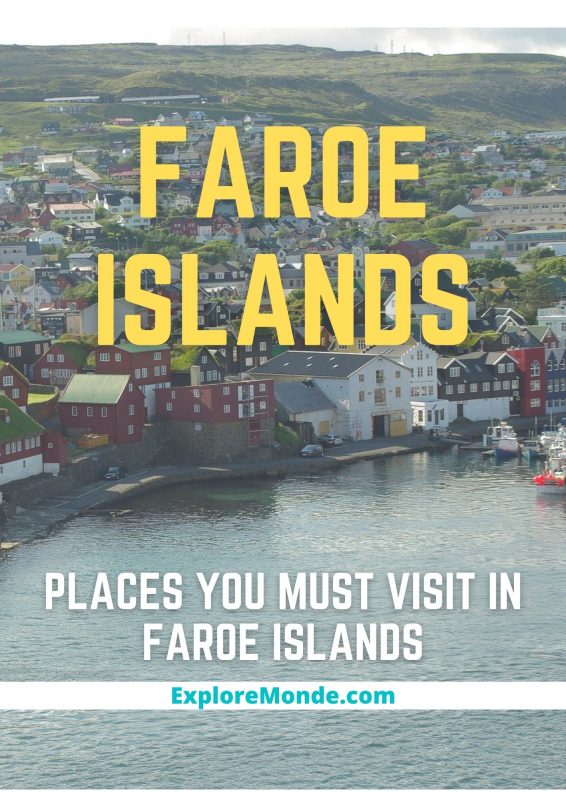
Note: The hours of operation, ticket prices, and admission criteria of museums, parks, etc. may change from time to time. For the most updated information, we recommend checking the official website of the attraction directly prior to your planned visit.
Categories: Asia | Africa | Europe | USA | Australia & New Zealand | France | Germany | India | Italy | Spain | Sports | Switzerland | Travel Tips | UK | Products | Download AI Trip Planner App
Page Contents










